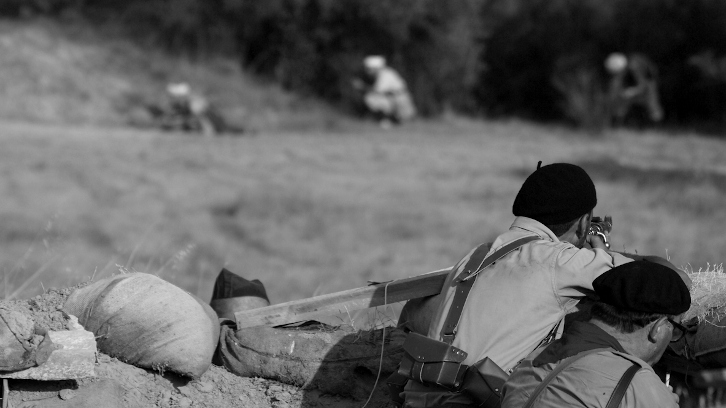To the barricades! The role of emotions in the revolutionary outbreak of 1936 in Catalonia.

A researcher from the Department of Sociology at the UAB has analyzed in an article how various emotional mechanisms impacted the revolutionary outbreak in Catalonia during the Spanish Civil War. Emotions such as enthusiasm, fear and hatred played a crucial role in the ambitious program of social transformation led by the anarchists of the CNT-FAI.
On July 18, 1936, a coup d'état against the II Republic took place in Spain, which led to a civil war that lasted for three years. In this context, in Catalonia, in response to the coup, there was a revolutionary outbreak from which the anarchists linked to the CNT-FAI and other extreme left-wing groups held a determinant power until May 1937 and developed an ambitious program of social transformation. Our paper aims to illustrate how various emotional mechanisms (mainly enthusiasm, fear, and hatred) probably played a crucial role in the events of those months.
The revolutionaries were probably motivated by an intense enthusiasm that led them to sacrifice their interests for the sake of what they considered to be the common good. Thus, among many other examples, thousands of militants formed volunteer militias and, poorly armed and without military experience, marched to fight against (and in most cases to die in front) the army in the neighboring region of Aragon.
However, enthusiasm, like any other emotion, probably clouded the judgment of the revolutionaries who made a multitude of naive and irrational decisions (such as the elimination of money and its substitution by vouchers) which proved extremely counterproductive for the war effort and for the revolution itself that ended up collapsing ten months later.
This was also the period of the “revolutionary terror” of the Civil War in Catalonia, in which thousands of people, including representatives of the Church, businessmen, and opponents of the revolution, were assassinated, victims of other forms of repression or forced to flee into exile. The revolutionary terror was strongly related to at least three emotional mechanisms. First, the violence generated widespread fear in broad layers of society. Secondly, the origin of the violence is probably to be sought in the secular hatred that a large part of the revolutionary proletariat felt against the Church and the bourgeoisie. Finally, the terror illustrates the negative conception of enthusiasm of classical philosophers such as Locke and Hume, for whom it constituted a form of fanaticism and intolerance.
In short, our article makes different contributions to the academic discussion on the role of emotions in the explanation of social phenomena. Focusing on the two main ones, on the one hand, we provide evidence in favor of the thesis that emotions can play a very important role in large-scale social processes, such as revolutions, civil wars, or wars of independence. On the other hand, we further the debate on enthusiasm. In this regard, first, we want to emphasize its ambiguous nature: enthusiasm can be an important motivation to sacrifice for the common good and, at the same time, a source of massive irrationality, as well as intolerance and fanaticism. Second, we argue that enthusiasm could be caused by a belief held with little conviction at first (in this case, that revolution and the establishment of a libertarian society are possible) that feeds back to produce the emotional outburst.
References
Tena-Sánchez, Jordi (2024) To the barricades! The social revolution of 1936 in Catalonia. Sociology Lens, 1–30. https://doi.org/10.1111/johs.12443


